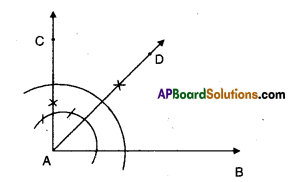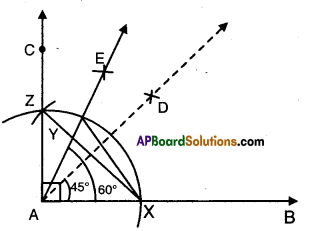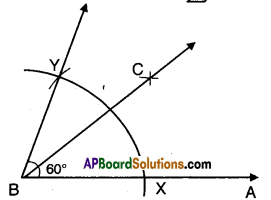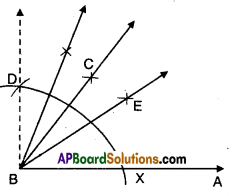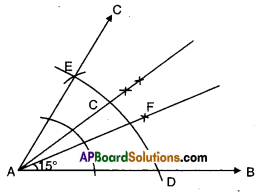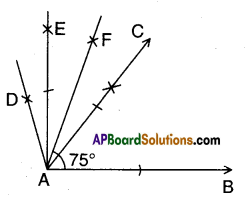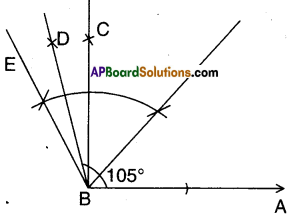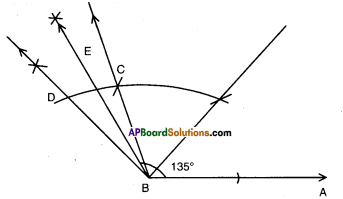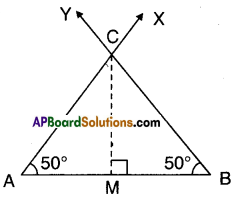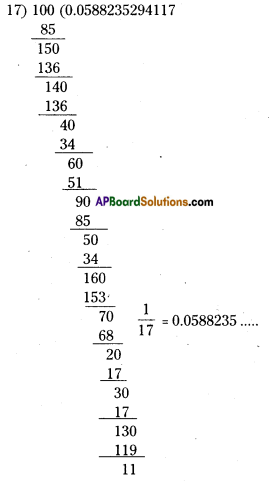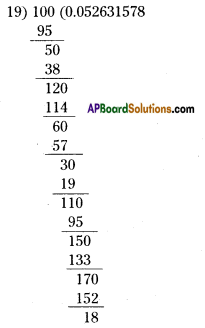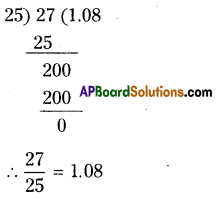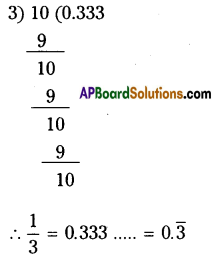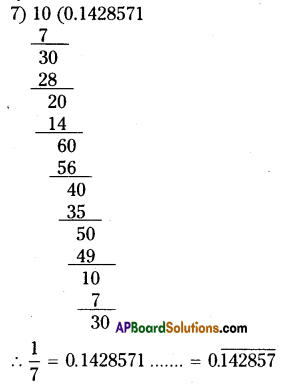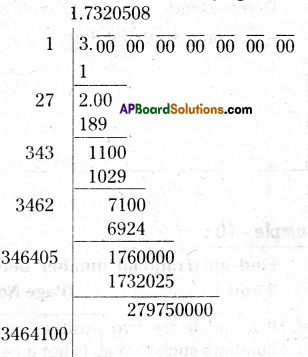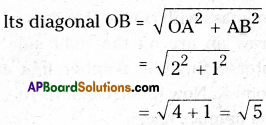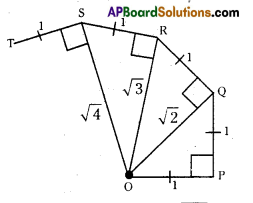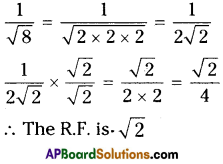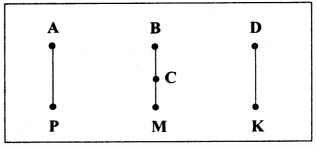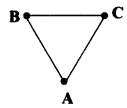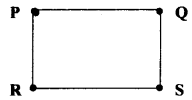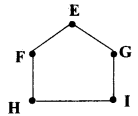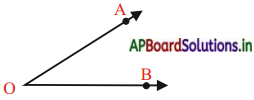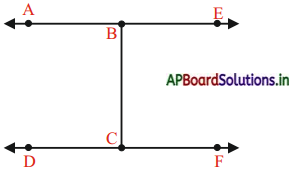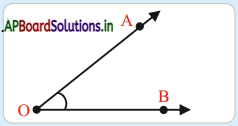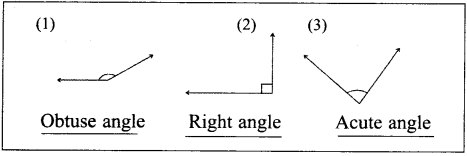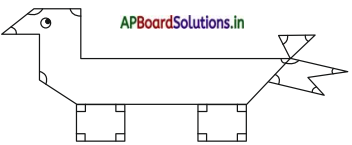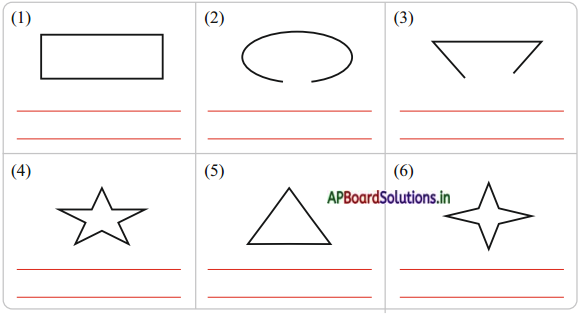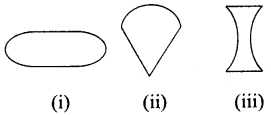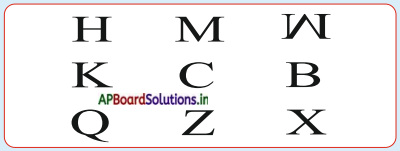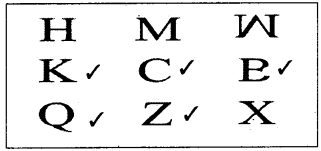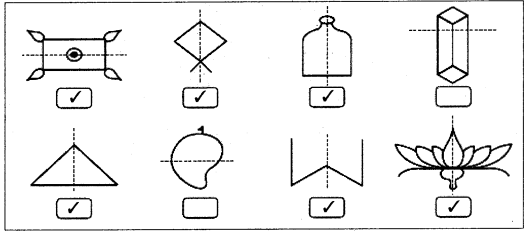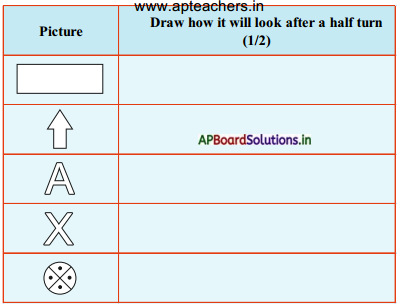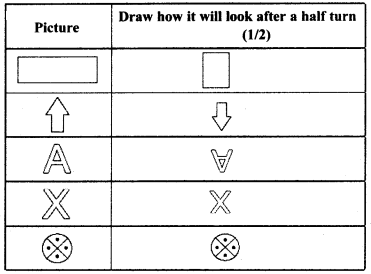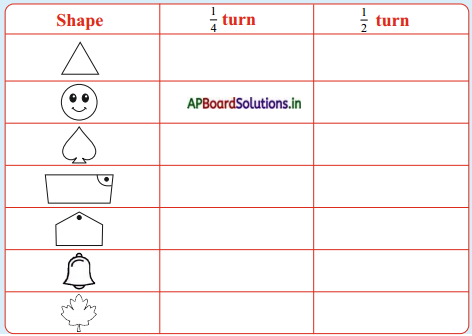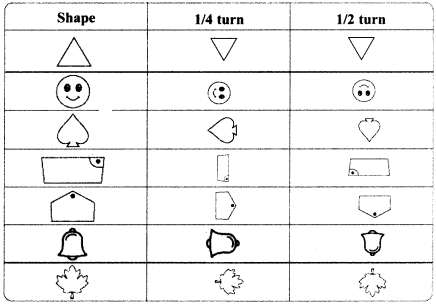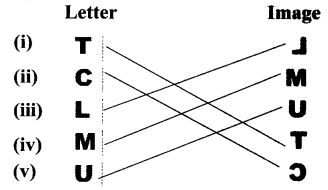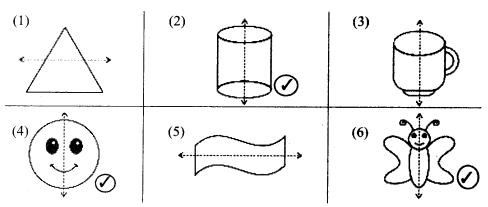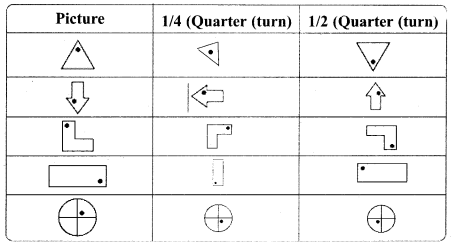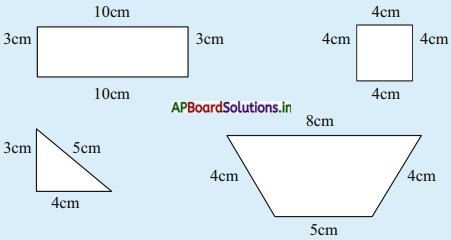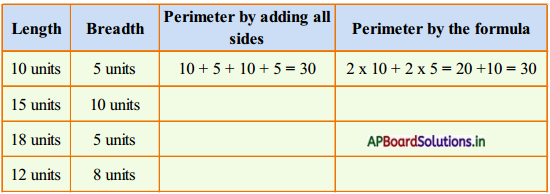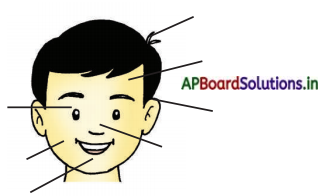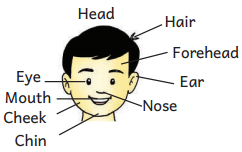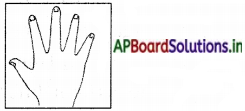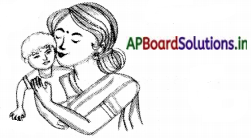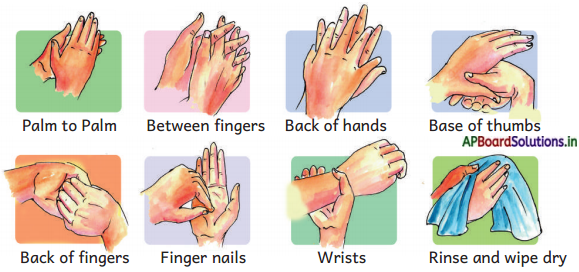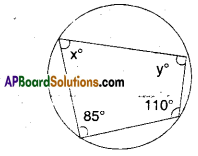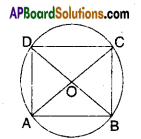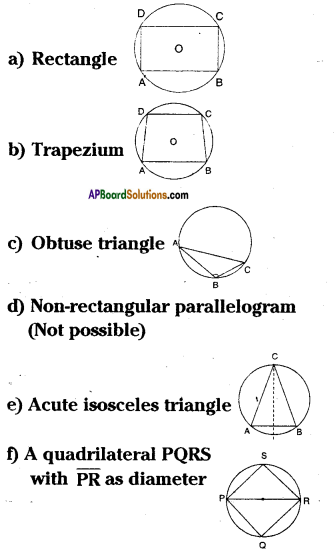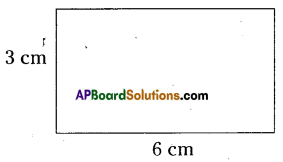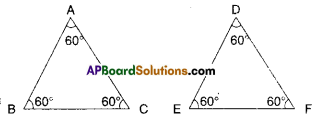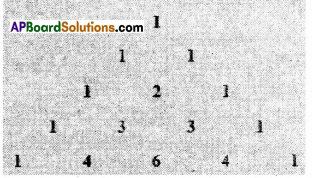AP State Syllabus AP Board 9th Class Maths Solutions Chapter 14 Probability InText Questions and Answers.
AP State Syllabus 9th Class Maths Solutions 14th Lesson Probability InText Questions
![]()
Do This
Question 1.
Observe the table given in the previous page (Textbook Page No. 293) and give some other example for each term. [Page No. 294]
Solution:
Certain : Independence day on 15th Aug.
More likely : When a die is thrown, the chance of getting a number less than or equal to 5. Equally likely : When a coin is tossed, getting a head.
Less likely : When a die is thrown, the chance of getting neither prime nor composite. Impossible : When a die is thrown, getting a negative number.
Question 2.
Classify the following statements into the categories less likely, equally . likely, more likely. [Page No. 294]
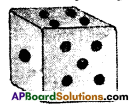
a) Rolling a die and getting a number 5 on the top face.
b) Getting a cold wave in your village in the month of November.
c) India winning the next soccer (foot ball) world cup.
d) Getting a tail or head when a coin is tossed.
e) You buy a lottery ticket and win the jackpot.
Solution:
a) less likely
b) more likely
c) less likely
d) equally likely
e) more likely
![]()
Try These
Question 1.
If you try to start a scooter, what are the possible outcomes ? [Page No. 295]
Solution:
[Starts], [Doesn’t start]
Question 2.
When you roll a die, what are the six possible outcomes ? [Page No. 295]
Solution:
1, 2, 3, 4, 5 and 6.
Question 3.
When you spin the wheel shown, what are the possible outcomes ? (Outcomes here means the possible sector where the pointer stops) [Page No.295]

Solution:
A, B and C.
Question 4.
You have ajar with five identical balls of different colours. [White, Red, Blue, Grey and Yellow] and you have to pick up (draw) a ball without looking at it. List the possible outcomes you get. [Page No. 295]
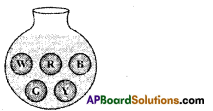
Solution:
White ball, Red ball, Blue ball. Grey ball and Yellow ball.
![]()
Think, Discuss and Write
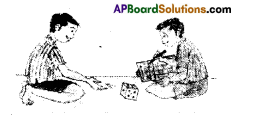
In rolling a die [Page No. 295]
Question
Does the first player have a greater chance of getting a six on the top face ?
Solution:
No. The chance of getting 6 on the top face is independent of the turn of the player.
Question
Would the player who played after him have a lesser chance of getting a six on the top face?
Solution:
No.
![]()
Question
Suppose the second player got a six on the top face. Does it mean that the third player would not have a chance of getting a six on the top face ?
Solution:
No. The third player may or may not get six on the top face. It is indepen¬dent of 2nd player’s outcome.
Do This
Question
Toss a coin for number of times as shown in the table. And record your findings in the table [Page No. 296]
Solution:

Question
What hapens if you increase the num- her of tosses more and more.
Solution:
If you increase the number of tosses more and more they are equally likely chances to get a head or a tail.
Note : This could also be done by the students with a die, roll it for large number of times and observe!
![]()
Do This
If three coins are tossed simulta¬neously : [Page No. 299]
a) Write all possible outcomes.
Solution:
HHH, HHT, HTH, THH, HTT, THT, TTH, TTT, total 8 outcomes.
b) Number of possible outcomes.
Solution:
8
c) Find the probability of getting at least one head, (getting one or more than one head)
Solution:
P = \(\frac{\text { favourable outcomes }}{\text { total outcomes }}=\frac{7}{8}\)
d) Find the probability of getting at most two heads, (getting two or less than two heads)
Solution:
P = \(\frac{\text { favourable outcomes }}{\text { total outcomes }}=\frac{7}{8}\)
![]()
e) Find the probability of getting no tails.
Solution:
P = \(\frac{\text { favourable outcomes }}{\text { total outcomes }}=\frac{1}{8}\)
Try This
Find the probability of each event when a die is rolled once. [Page No. 300]

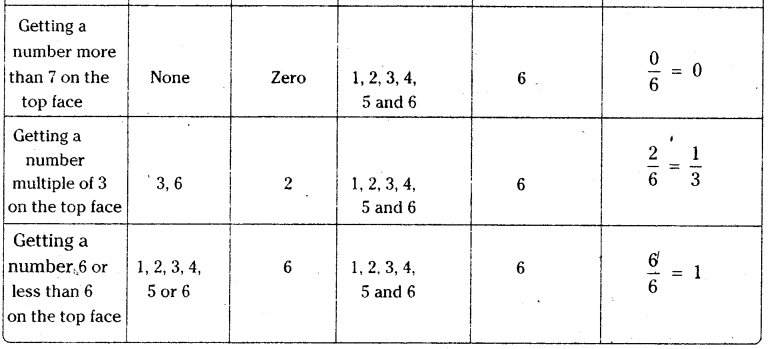
Try These
From the figure given below [Page No. 306]
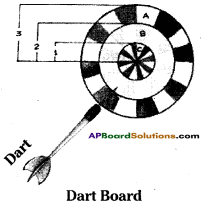
Question 1.
Find the probability of the dart hit¬ting the board in the circular region B. (i.e., ring B)
Solution:
Area of innermost ‘C’ circle = πr2
= π x 12 = π sq. units.
Area of the middle ‘B’ circle
= π (22 – 12) = π (4 – 1) = 3π sq.units.
Area of the outermost ’A’ circle
= π (32 – 22) = π (9 – 4) = 5π sq.units.
Probability of hitting the circle B
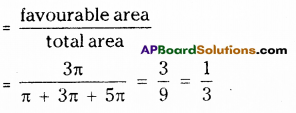
![]()
Question 2.
Without calculating, write the percent¬age of probability of the dart hitting the board in circular region ‘C’ (Le., ring C).
Solution:
\(\frac{1}{9}\) x 100% = 11\(\frac{1}{9}\)
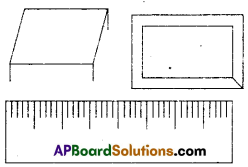
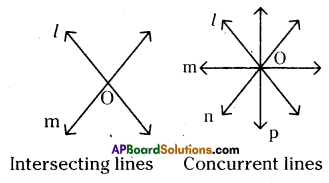
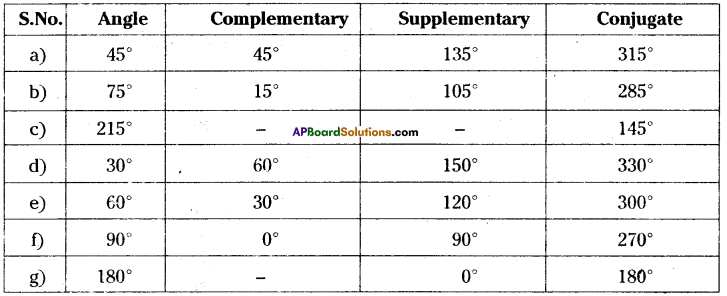

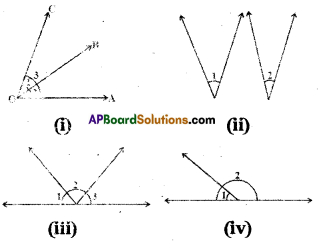
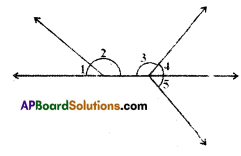
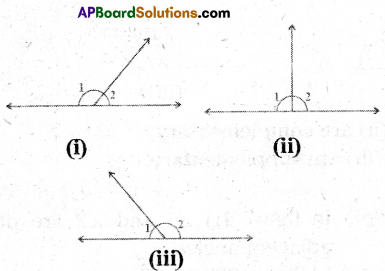
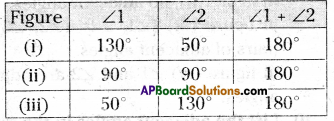

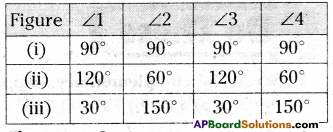
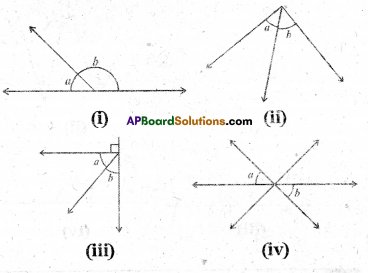
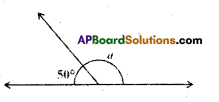
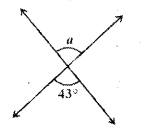

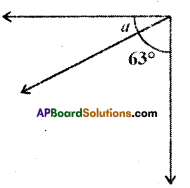
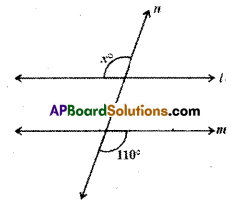
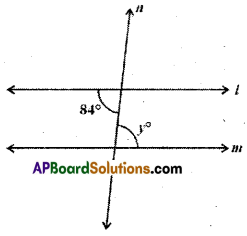
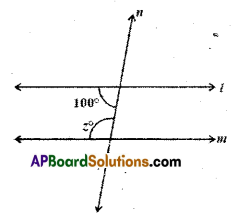
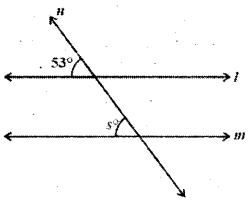
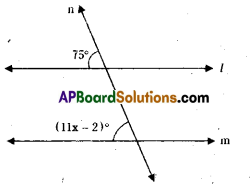
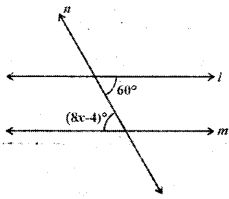
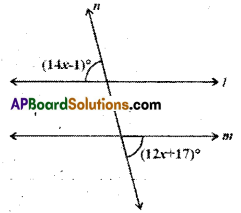
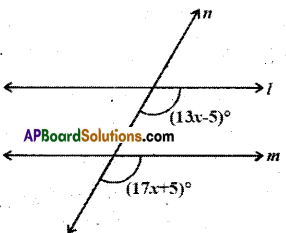

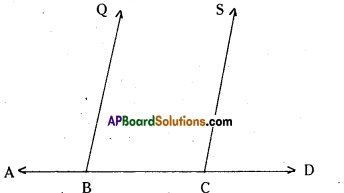
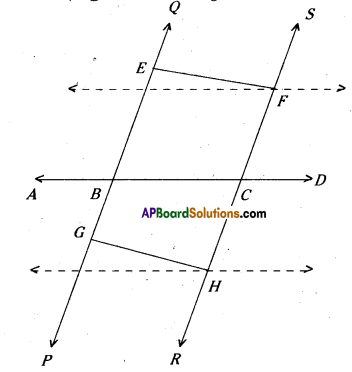
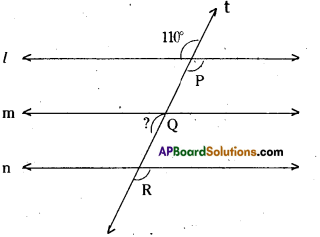
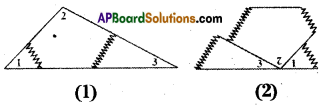
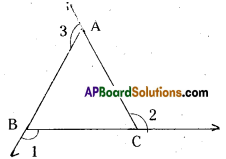

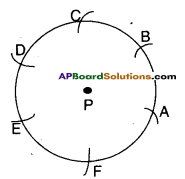
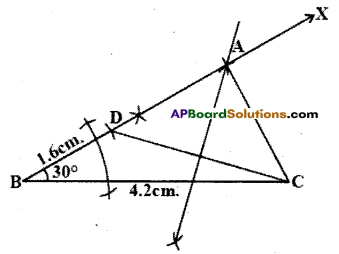
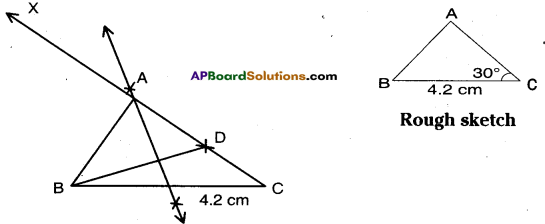

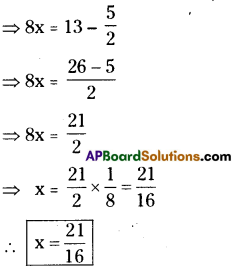
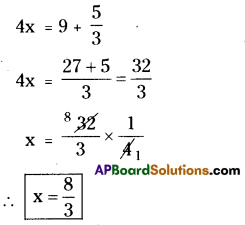
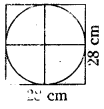
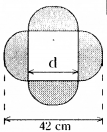
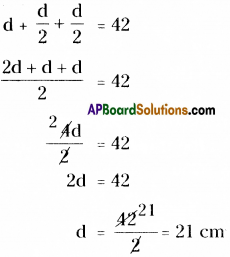
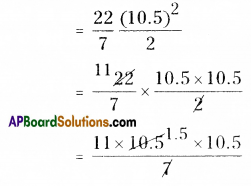
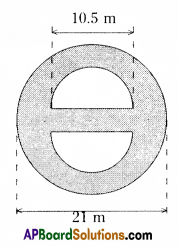
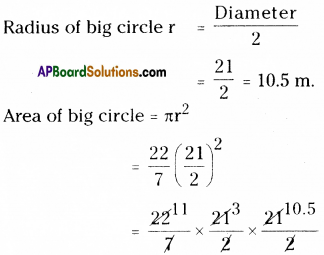
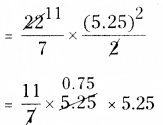
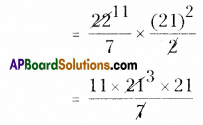
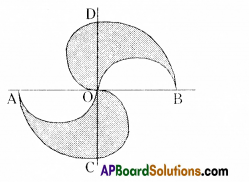
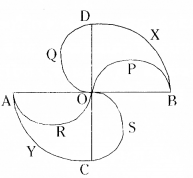
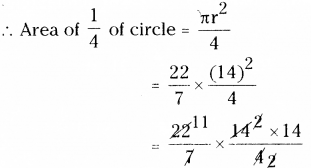

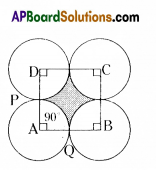
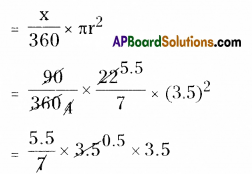

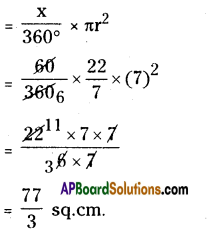
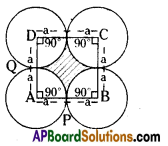
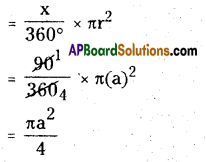
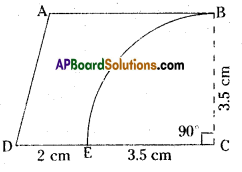
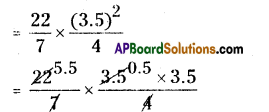

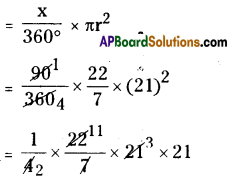


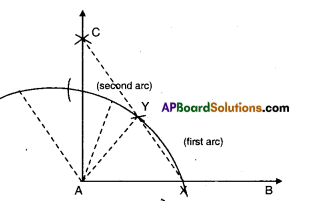 |
|